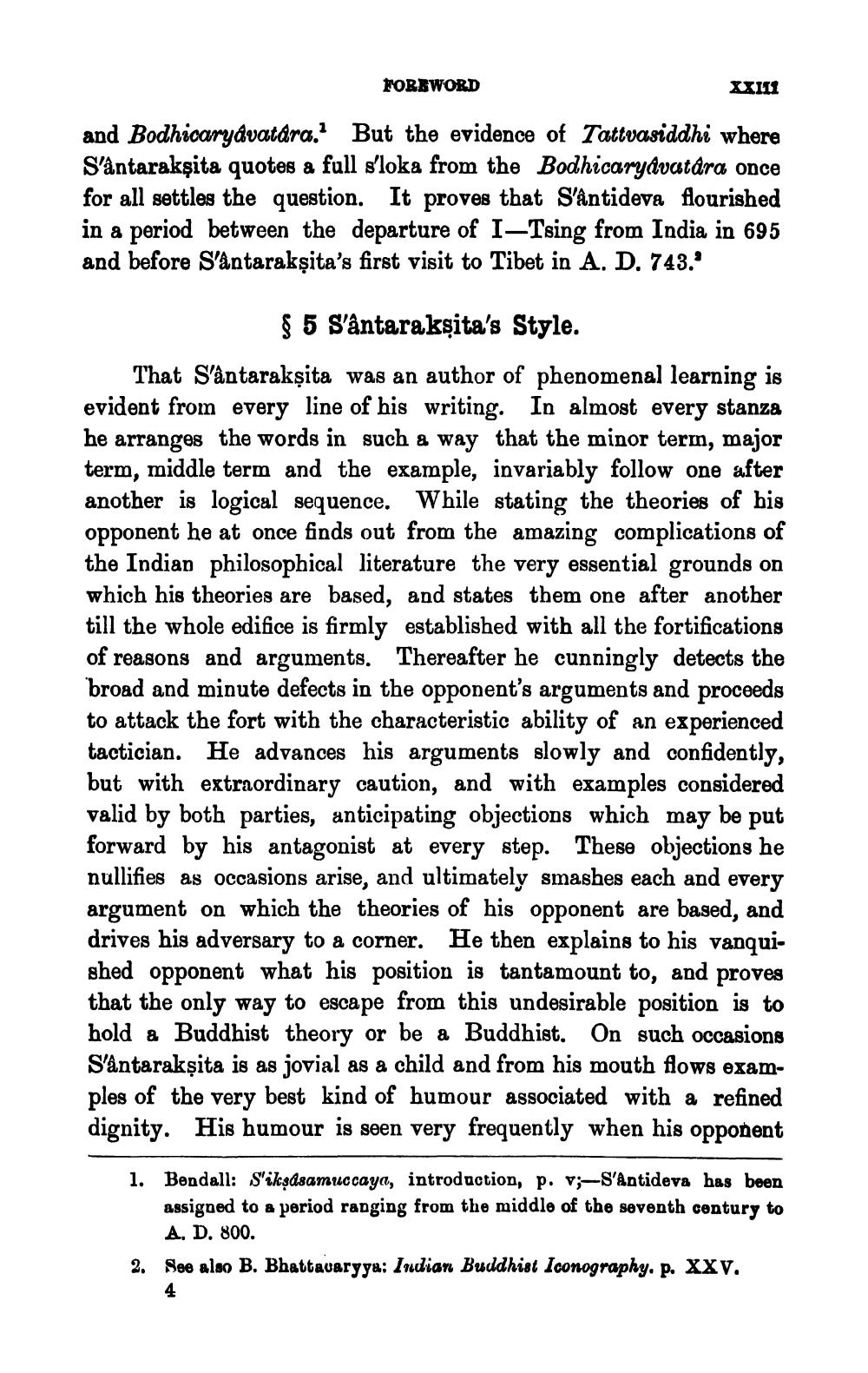________________
FOREWORD
and Bodhicaryávatára.” But the evidence of Tattvasiddhi where S'antarakṣita quotes a full s'loka from the Bodhicaryavatára once for all settles the question. It proves that S'Antideva flourished in a period between the departure of I–Tsing from India in 695 and before S'antarakṣita's first visit to Tibet in A. D. 743.'
§ 5 S'ântarakṣita's Style. That S'ântarakṣita was an author of phenomenal learning is evident from every line of his writing. In almost every stanza he arranges the words in such a way that the minor term, major term, middle term and the example, invariably follow one after another is logical sequence. While stating the theories of his opponent he at once finds out from the amazing complications of the Indian philosophical literature the very essential grounds on which his theories are based, and states them one after another till the whole edifice is firmly established with all the fortifications of reasons and arguments. Thereafter he cunningly detects the broad and minute defects in the opponent's arguments and proceeds to attack the fort with the characteristic ability of an experienced tactician. He advances his arguments slowly and confidently, but with extraordinary caution, and with examples considered valid by both parties, anticipating objections which may be put forward by his antagonist at every step. These objections he nullifies as occasions arise, and ultimately smashes each and every argument on which the theories of his opponent are based, and drives his adversary to a corner. He then explains to his vanquished opponent what his position is tantamount to, and proves that the only way to escape from this undesirable position is to hold & Buddhist theory or be a Buddhist. On such occasions Santarakṣita is as jovial as a child and from his mouth flows examples of the very best kind of humour associated with a refined dignity. His humour is seen very frequently when his opponent
1. Bendall: S'iksdsamuccaya, introduction, p. 4;-S'Antideva has been
assigned to a period ranging from the middle of the seventh century to
A, D. 800. 2. See also B. Bhattavaryga: Indian Buddhist Iconography. p. XXV.




